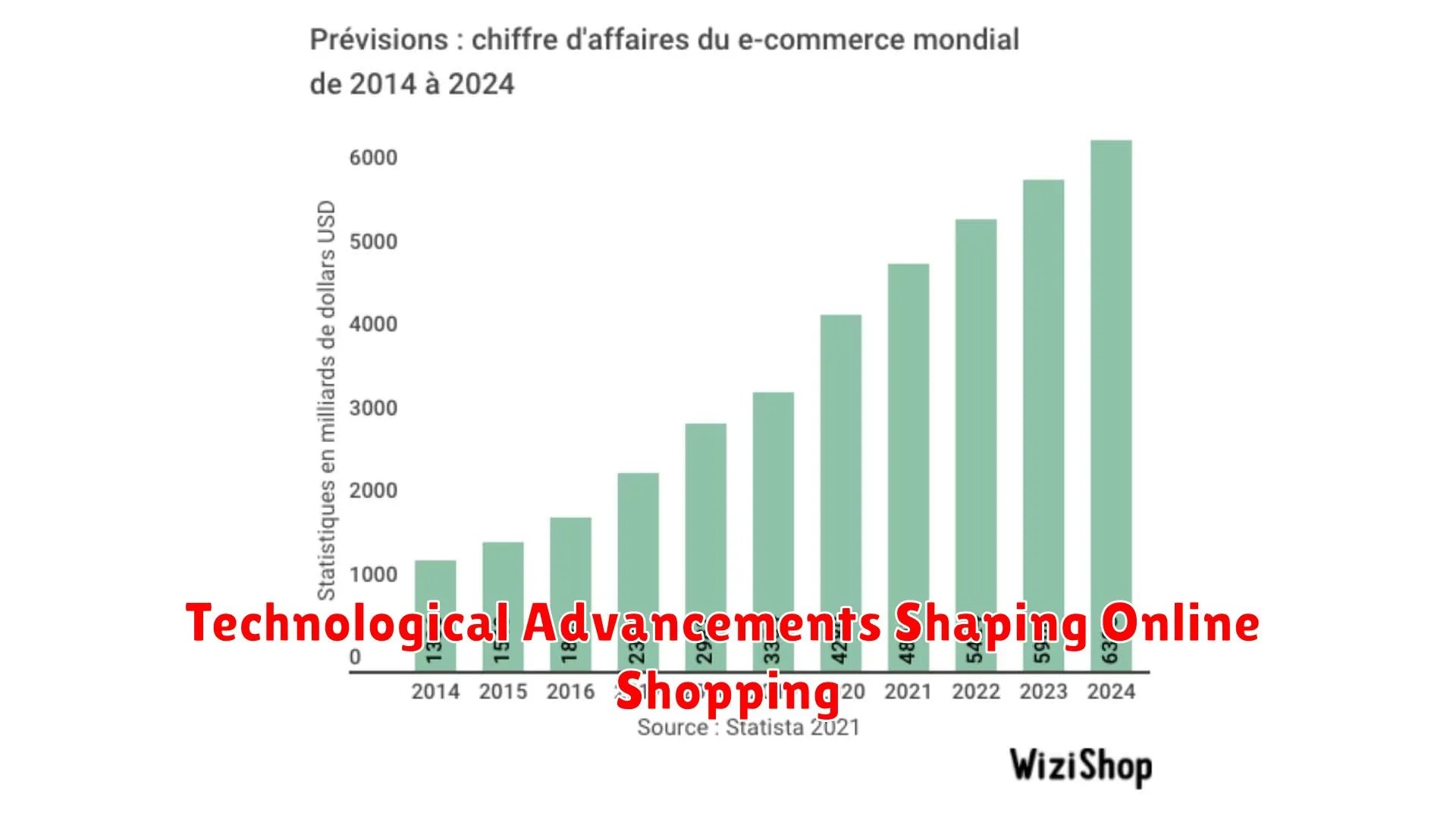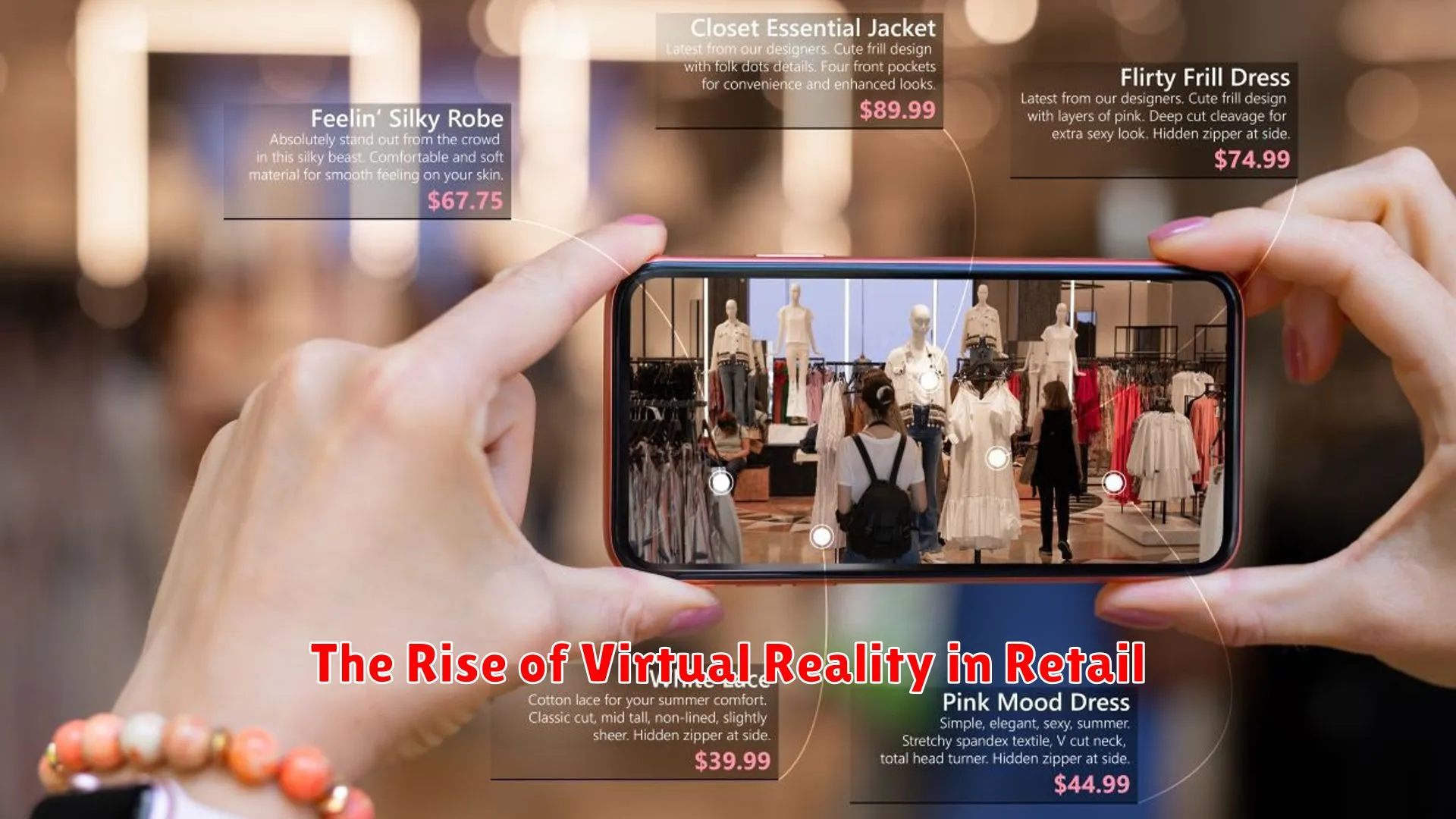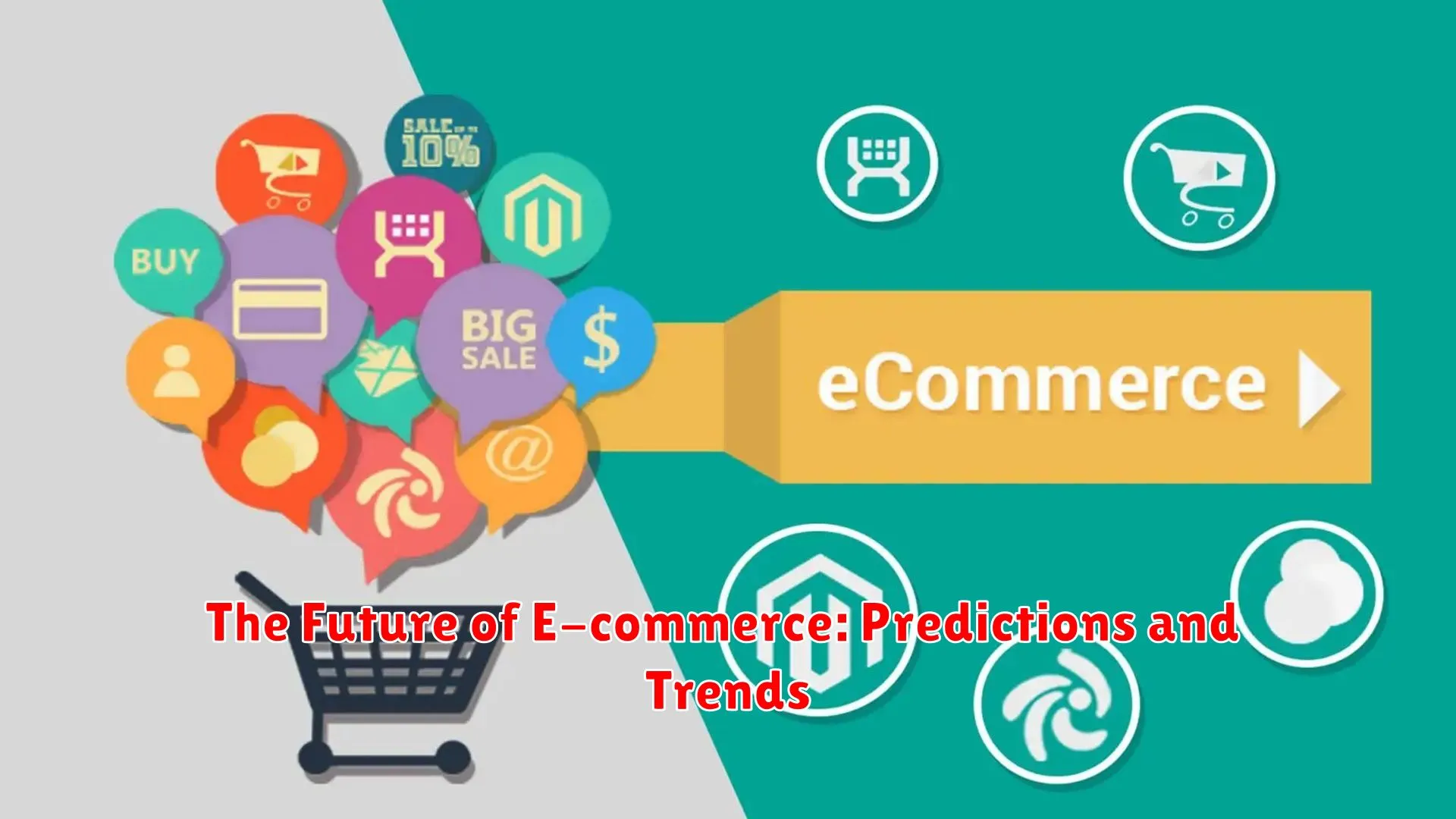Discover how the landscape of e-commerce has transformed from traditional online stores to immersive virtual shopping experiences in this exploration of The Evolution of E-commerce.
The Early Days of E-commerce

In the early days of e-commerce, online shopping was a groundbreaking concept that revolutionized the way people conducted transactions. Back in the late 1990s and early 2000s, the idea of purchasing products and services over the internet was met with skepticism and caution by consumers.
Online stores were the pioneers of e-commerce during this period, offering a limited selection of products and basic payment options. Companies like Amazon and eBay emerged as trailblazers in the industry, paving the way for the digital shopping experience we know today.
Despite concerns about security and trustworthiness, early adopters gradually embraced the convenience and accessibility of online shopping. The evolution of e-commerce started with these humble beginnings, setting the stage for the exponential growth and transformation that followed in the years to come.
Technological Advancements Shaping Online Shopping

In the realm of e-commerce, technological advancements have played a pivotal role in transforming the landscape of online shopping. These advancements have not only enhanced the efficiency of online stores but have also revolutionized the shopping experiences for consumers.
One significant advancement that has reshaped online shopping is Artificial Intelligence (AI). AI-powered chatbots and virtual assistants provide personalized recommendations, assist in product searches, and offer real-time customer support, creating a more interactive and tailored shopping experience.
Augmented Reality (AR) and Virtual Reality (VR) technologies have brought about a remarkable shift in how consumers perceive and engage with products online. By enabling virtual try-on experiences and interactive product demonstrations, these technologies bridge the gap between physical and online shopping, offering a more immersive and engaging shopping journey.
The rise of mobile shopping has been another significant technological advancement that has shaped online shopping. With the increasing adoption of smartphones and mobile apps, consumers now have the convenience of making purchases anytime, anywhere, leading to a surge in mobile commerce.
Moreover, big data analytics has empowered online retailers to gain profound insights into consumer behavior and preferences. By leveraging data analytics, retailers can personalize marketing efforts, optimize pricing strategies, and enhance the overall shopping experience for customers.
As technology continues to evolve, innovations such as voice commerce, blockchain in supply chain management, and IoT integration are poised to further transform the landscape of online shopping, offering unprecedented convenience, security, and personalization for consumers.
The Rise of Virtual Reality in Retail

In recent years, the retail industry has witnessed a significant shift towards embracing virtual reality (VR) technology as a way to enhance the online shopping experience for consumers. Virtual reality has transformed the way customers interact with products and brands, offering an immersive and engaging shopping journey like never before.
One of the primary benefits of incorporating virtual reality into retail is the ability to simulate physical store environments in a digital space. Through VR technology, customers can explore virtual stores, browse through products, and even visualize how items would look in real life, all from the comfort of their homes. This level of interactivity provides a more personalized and interactive shopping experience, bridging the gap between online and offline retail.
Virtual reality has also been instrumental in addressing common challenges faced by e-commerce platforms, such as product visualization and size accuracy. By leveraging VR solutions, retailers can offer customers a realistic shopping experience, enabling them to make more informed purchasing decisions and reducing the likelihood of returns due to misaligned expectations.
Moreover, virtual reality has opened up new possibilities for brands to engage with their audience through innovative marketing strategies. From virtual fashion shows to immersive product demonstrations, companies are harnessing the power of VR to create memorable and interactive experiences that resonate with tech-savvy consumers.
As the demand for seamless and engaging online shopping experiences continues to grow, the integration of virtual reality in retail is poised to revolutionize the future of e-commerce. By blurring the lines between the physical and digital realms, VR technology is reshaping the way consumers shop, interact with brands, and make purchasing decisions in the digital era.
Integrating AI for Personalized Experiences

In the rapidly evolving landscape of e-commerce, the integration of Artificial Intelligence (AI) has become a game-changer, paving the way for unparalleled personalized experiences for online shoppers. With AI technologies, online stores are transitioning from static platforms to dynamic and interactive virtual shopping environments that cater to the individual preferences and needs of each customer.
AI-powered algorithms analyze vast amounts of data on consumer behavior, browsing history, purchase patterns, and preferences to create personalized recommendations tailored to each user. This level of customization not only enhances the shopping experience but also improves customer satisfaction and loyalty. Through AI, e-commerce platforms can anticipate customer needs, streamline the shopping process, and offer relevant product suggestions, leading to increased conversion rates and higher sales revenue.
Moreover, AI-driven chatbots and virtual assistants are revolutionizing customer service in e-commerce, providing instant assistance and personalized recommendations around the clock. These bots can engage with customers in real-time, answer queries, offer product guidance, and even assist in completing purchases. By leveraging AI technologies, online retailers can deliver a seamless and interpersonal shopping experience that mimics the level of service found in physical stores.
As e-commerce continues to evolve, the integration of AI for personalized experiences is reshaping the industry’s future. By harnessing the power of AI, online retailers can create tailored experiences that resonate with customers on an individual level, driving engagement, loyalty, and long-term success in the competitive digital marketplace.
The Future of E-commerce: Predictions and Trends

As technology continues to advance rapidly, the future of e-commerce is poised to usher in exciting predictions and trends that will reshape the way we shop online. From online stores to virtual shopping experiences, the evolution of e-commerce is set to reach new heights in the coming years.
1. Virtual Reality Shopping: One of the key trends in the future of e-commerce is the integration of virtual reality (VR) technology into the shopping experience. Consumers will be able to explore products in a virtual environment, try them on virtually, and make informed purchase decisions from the comfort of their own homes.
2. Personalized Recommendations: E-commerce platforms will leverage artificial intelligence and big data to provide customized product recommendations tailored to each individual shopper. This personalization will enhance the shopping experience and increase customer satisfaction.
3. Augmented Reality Try-Ons: Augmented reality (AR) try-on features will become more prevalent, allowing customers to virtually try on clothing, accessories, and even makeup before making a purchase. This technology will reduce returns and improve shopper confidence.
4. Sustainable E-commerce Practices: The future of e-commerce will see a greater emphasis on sustainability and eco-friendly practices. Consumers are becoming more environmentally conscious, leading to a demand for sustainable products and ethical business practices from e-commerce retailers.
5. Voice Commerce: With the rise of smart speakers and voice assistants, voice commerce is expected to grow exponentially. Consumers will be able to make purchases using voice commands, making the shopping process more convenient and seamless.
These are just a few of the trends and predictions that are shaping the future of e-commerce. As technology continues to evolve, we can expect e-commerce to become more immersive, personalized, and sustainable, offering a seamless and engaging shopping experience for consumers around the world.
Case Studies: Innovators in Virtual Shopping

As e-commerce continues to evolve, innovative companies are paving the way for a new era in online shopping through virtual experiences. Let’s delve into some case studies of companies that are revolutionizing virtual shopping:
1. XYZ Fashion
XYZ Fashion has redefined the traditional online shopping experience by offering virtual dressing rooms. Customers can create their avatars, try on different outfits virtually, and see how they look from all angles. This innovative approach not only enhances the shopping experience but also reduces the rate of returns.
2. TechGadgets VR Store
TechGadgets VR Store has taken virtual shopping to the next level by introducing virtual reality (VR) technology. Customers can explore products in a fully immersive virtual environment, interact with them as if they were in a physical store, and make informed purchase decisions. This technology has significantly enhanced customer engagement and satisfaction.
3. HomeDecor 360
HomeDecor 360 is revolutionizing the way customers shop for home decor items by offering augmented reality (AR) features. With AR technology, customers can visualize how furniture and decor items look in their own homes before making a purchase. This has not only increased customer confidence in their purchases but has also reduced the likelihood of mismatched items.
Challenges and Opportunities Ahead

The evolution of e-commerce from traditional online stores to immersive virtual shopping experiences brings forth a mix of challenges and opportunities for businesses in the digital landscape. One of the main challenges ahead is the need to ensure seamless integration of technology to enhance user experience. As virtual shopping platforms continue to evolve, companies must stay at the forefront of innovation to keep customers engaged and satisfied.
Cybersecurity remains a significant challenge as e-commerce platforms are prime targets for cyber threats and data breaches. Protecting customer information and maintaining trust in online transactions is crucial. Businesses must invest in robust cybersecurity measures to safeguard sensitive data and ensure secure transactions in the virtual shopping environment.
On the flip side, the shift towards virtual shopping experiences presents exciting opportunities for businesses to personalize the customer journey. By leveraging data analytics and artificial intelligence, companies can offer tailored recommendations, interactive product displays, and customized shopping interfaces. This personalized approach enhances customer satisfaction and drives sales in the competitive e-commerce market.
Additionally, the integration of augmented reality (AR) and virtual reality (VR) technologies opens up new horizons for immersive shopping experiences. Retailers can create virtual showrooms, allow customers to visualize products in real-world settings, and even offer virtual try-on options, revolutionizing the online shopping experience. Embracing these technologies can set businesses apart and create a unique selling point.
As e-commerce continues to evolve, businesses must navigate through these challenges and capitalize on the opportunities presented by virtual shopping experiences. By staying agile, innovative, and customer-centric, companies can thrive in the dynamic landscape of digital commerce.
Conclusion: Preparing for the Next Phase of E-commerce

As we witness the continuous evolution of e-commerce, it is crucial for businesses to stay ahead by adapting to the changing landscape. The shift from traditional online stores to immersive virtual shopping experiences signals a new era in the digital retail industry. To thrive in this next phase, companies need to focus on several key strategies.
1. Embracing Virtual Reality and Augmented Reality
Virtual reality (VR) and augmented reality (AR) are becoming integral to the e-commerce experience, providing customers with immersive and interactive ways to shop online. Businesses should invest in technologies that allow customers to virtually try products before making a purchase, enhancing their shopping journey.
2. Personalizing the Customer Experience
Utilizing data analytics and artificial intelligence, businesses can create personalized shopping experiences for each customer. By analyzing customer preferences and behavior, companies can tailor product recommendations and promotions, ultimately increasing customer satisfaction and loyalty.
3. Enhancing Convenience with Mobile Commerce
Mobile commerce, or m-commerce, continues to grow in importance as more consumers shop on their smartphones and tablets. Businesses need to optimize their websites and apps for mobile devices to provide a seamless and convenient shopping experience, driving mobile sales.
4. Implementing Seamless Omnichannel Strategies
In today’s digital age, customers expect a seamless shopping experience across multiple channels. Businesses should integrate their online and offline channels to create an omnichannel approach, allowing customers to interact with the brand consistently regardless of the platform.
5. Prioritizing Cybersecurity and Trust
With the increasing number of cyber threats, maintaining cybersecurity is paramount for e-commerce businesses. Building trust with customers by ensuring the security of their data and transactions is crucial in this digital era, as any breach can have detrimental effects on the brand reputation.
Conclusion
In conclusion, the evolution of e-commerce has transitioned from traditional online stores to immersive virtual shopping experiences, enhancing customer engagement and retail opportunities.

